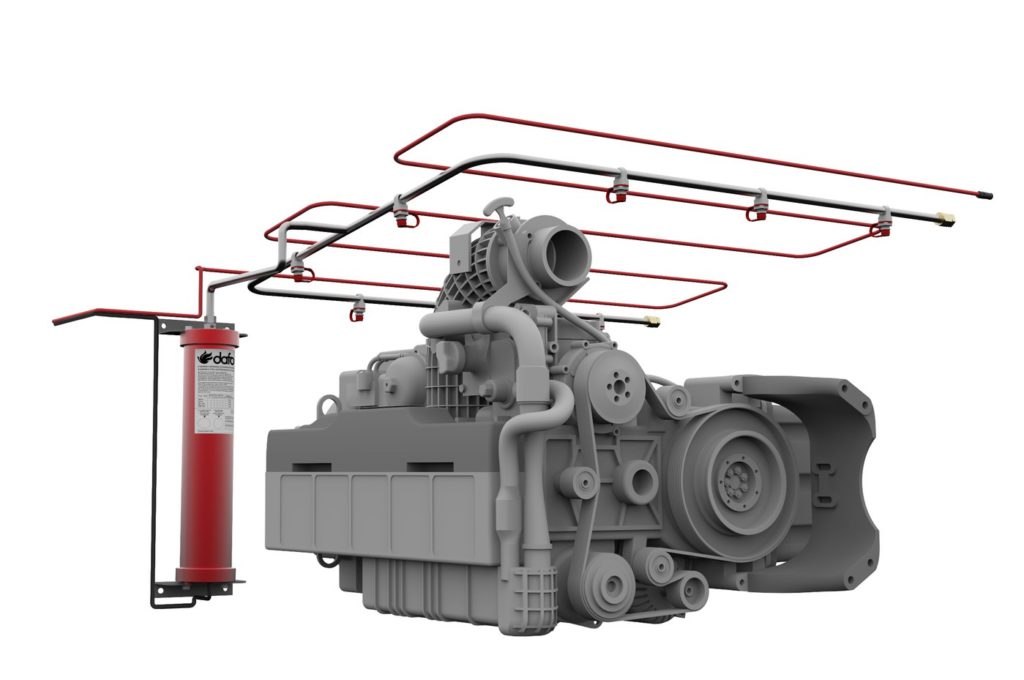By Fredrik Rosen, Business Manager, Dafo Vehicle Fire Protection AB
As of July 11, 2018, it is mandatory to install of fire suppression systems to new vehicle types of single-deck, double-deck, rigid or articulated vehicles of category M2 or M3 and specifically vehicles having a capacity exceeding 22 passengers in addition to the driver – “Class III”. Class III vehicles are constructed exclusively for the carriage of seated passengers, more commonly referred to as “coaches”. The requirement applies in the case of vehicles having an internal combustion engine or a combustion heater located to the rear of the driver’s compartment. As of July 11, 2019, this applies to all new Class III vehicles.
As of September 1st, 2020, it is mandatory to install of fire suppression systems to new vehicle types of single-deck, double-deck, rigid or articulated vehicles of category M2 or M3 and specifically vehicles having a capacity exceeding 22 passengers in addition to the driver – “Class I and Class II”. Class I vehicles are constructed with areas for standing passengers, to allow frequent passenger movement and Class II vehicles are constructed principally for the carriage of seated passengers and designed to allow the carriage of standing passengers in the gangway and/or in an area which does not exceed the space provided for two double seats, more commonly referred as “city buses”. The requirement applies in the case of vehicles having an internal combustion engine or a combustion heater located to the rear of the driver’s compartment. As of September 1st, 2021, this applies to all new Class I and Class II vehicles.

Fire test procedure included in UNECE Regulation 107
In 2016 the documents Addendum 106 – UNECE Regulation No. 107 – Revision 6 – Amendment 3 and 5 were published. The documents included a fire testing procedure for fire suppression systems for engine compartments of buses and coaches with 4 tests extracted from SP method 4912. SP method 4912 was developed by RISE Research Institutes of Sweden (former SP Technical Research Institute of Sweden).
A short video explaining the basics of a vehicle fire suppression system.
The requirement of installation of fire suppression systems applies to the vehicle
The fire suppression system manufacturer’s UNECE approval will be used as a part of the bus manufacturer’s vehicle approval for UNECE Regulation No. 107 concerning fire suppression systems.
European Community Whole Vehicle Type Approval (ECWVTA)
Within the European Union (EU), bus manufacturers normally have a European Community Whole Vehicle Type Approval (ECWVTA) in order to sell their bus/coach. The ECWVTA is a voluntary system and a way for ensuring that vehicles meet relevant environmental, safety and security standards. Once all of the system and component approvals are in place, the vehicle will be considered as a whole by a designated type approval body. This certification will be accepted throughout the EU. Once a vehicle is approved, the manufacturer should have processes in place to produce a Certificate of Conformity (CoC) for each vehicle manufactured.
European legislation
It is not yet defined how the fire suppression system manufacturer’s UNECE approval will fit in to this process. This will be legislated and regulated through Regulation (EC) No 661/2009/EU.
World Forum for the harmonization of vehicle regulations (WP.29)
The UNECE Sustainable Transport Division provides the secretariat services to WP.29, the World Forum that incorporates into its regulatory framework the technological innovations of vehicles to make them safer and more environmentally sound.